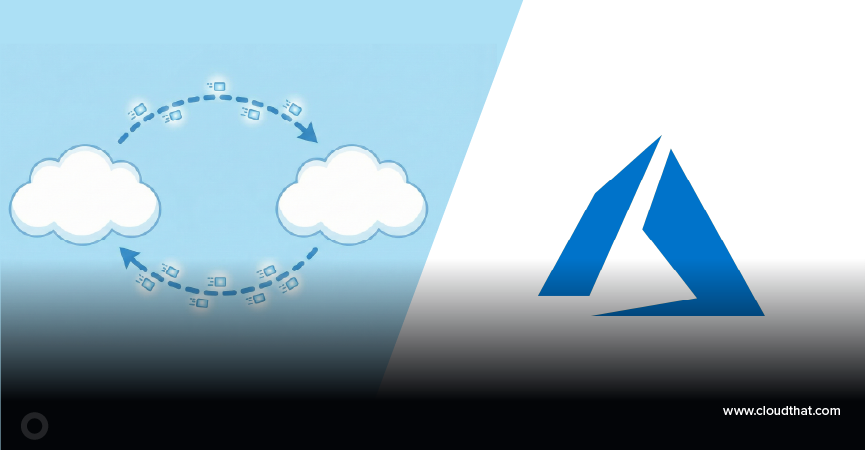|
Voiced by Amazon Polly |
Overview
In recent times, security has been a big concern for companies. They are ready to prevent sensitive data at any cost because if any sensitive information is leaked outside their organization, it can cost them a lot.
Organizations are hiring security engineers to track and monitor sensitive data outside and within their companies. We can track and block such data using automated methods, also. Microsoft provides an automation method to track files, text, and mail to prevent sensitive data from being shared outside organizations and generate an alert or block messages containing such information.
In this article, we will see one method the Microsoft Exchange admin center provides. We will block the message containing sensitive information (Credit Card, IP address, PAN, etc.) inside Outlook mail.
Pioneers in Cloud Consulting & Migration Services
- Reduced infrastructural costs
- Accelerated application deployment
What is Confidential Data?
Confidential Data: Any piece of information that contains sensitive data and can harm people or organizations it relates to.
Information like Credit Card Number, Employee Credentials, personal details, Bank Details, etc., are confidential data.
Organizations have client information and budget details for any project with highly confidential data, which should never be leaked or shared outside.
Corporates have confidential agreements with their clients; if it gets leaked, they can damage their reputation and cost a lot of money.
Why do we need to Protect Confidential Data?
These days organizations have huge amounts of data, and any single piece of information can damage whole data. Attackers or any other bad actors can get access using those data. To prevent such incidents, we must protect all sensitive information that can allow any unauthorized user access.
There are many ways to protect data at any level, and organizations have conditional access policies for their employees to have minimum access so that minimum data is shared.
Methods to Implement
There are many methods to protect sensitive data being shared outside the organization.
In this article, we will discuss the method provided by Microsoft to monitor any confidential data being shared in chat, text, and mail.
We will also configure the service and see how the message gets blocked and notified to necessary people inside the organization.
What is the Exchange Admin Center in Microsoft?
Exchange admin center (EAC) is a web-based management console in Microsoft Exchange Server that allows Exchange administrators to manage their Exchange environment from a central location. EAC was introduced in Exchange Server 2013 to replace the previous Exchange Management Console (EMC) and Exchange Control Panel (ECP) interfaces.
EAC provides a unified interface for managing various Exchange server components and features, such as mailboxes, groups, connectors, certificates, mobile devices, databases, transport rules, and more. It also allows administrators to monitor server health and performance, troubleshoot issues, and configure various settings.
DLP policy
DLP stands for Data Loss Prevention. A DLP policy is a set of rules and procedures to prevent unauthorized users from losing, misusing, or accessing sensitive data. In other words, a DLP policy helps organizations protect their confidential and sensitive information from accidental or intentional disclosure or theft.
DLP policies can be customized to meet an organization’s specific needs, such as identifying and protecting personally identifiable information (PII), financial data, healthcare records, intellectual property, or other sensitive information. DLP policies can also be configured to trigger alerts or take actions when a violation is detected, such as blocking the email or file from being sent, notifying the user or administrator, or applying encryption or other security measures to protect the data.
Steps to Create and Implement DLP Policy
To configure DLP Policy in Microsoft, login to: Microsoft 365 admin center
Step 1: Navigate to compliance on the left blade.
Step 2: Navigate to the Data loss prevention option from the left navigation bar in the compliance portal.
Step 3: Select Policies and click Create Policy.

Step 4: Choose an existing or custom template to create a policy and click Next.
Step 5: Give the policy a valid name and description and click Next.
Step 6: We can choose a specific administrative unit to apply the DLP policy or to apply to Full Directory (Default) and click Next.
Step 7: Choose the location to apply the DLP policy and click Next.

Note: We can exclude or include distribution groups to apply DLP policies in all locations.
Step 8: Click on + Create rule to create a new rule and give a Name and Description to the new rule.
Step 9: Configure all conditions and alerts as needed, restrict access to selected users, turn on users’ notifications to get notified if anything happens, and click Save and click Next.

Step 10: Select the policy mode to implement the policy, click Next, review all conjurations, and click Submit.
Conclusion
Using the Microsoft Exchange admin center, we have configured a DLP policy to prevent sensitive phishing or spam mail from harming our organization. Microsoft provides a compliance portal to configure all locations (Outlook, teams, exchange, SharePoint, etc.) and protect organizations by restricting access and sensitive information from getting leaked or misused by bad actors. We can use the Microsoft admin center to configure many more things and create an alert rule to get notified when an attack happens.
Making IT Networks Enterprise-ready – Cloud Management Services
- Accelerated cloud migration
- End-to-end view of the cloud environment
About CloudThat
CloudThat is an award-winning company and the first in India to offer cloud training and consulting services worldwide. As a Microsoft Solutions Partner, AWS Advanced Tier Training Partner, and Google Cloud Platform Partner, CloudThat has empowered over 850,000 professionals through 600+ cloud certifications winning global recognition for its training excellence including 20 MCT Trainers in Microsoft’s Global Top 100 and an impressive 12 awards in the last 8 years. CloudThat specializes in Cloud Migration, Data Platforms, DevOps, IoT, and cutting-edge technologies like Gen AI & AI/ML. It has delivered over 500 consulting projects for 250+ organizations in 30+ countries as it continues to empower professionals and enterprises to thrive in the digital-first world.
FAQs
1. Can we implement the DLP policy in multiple locations?
ANS: – Yes, we can assign DLP policy in all Microsoft locations and can create distribution groups to include and exclude users.
2. Can we use custom conditions to get notified when the condition matched?
ANS: – Yes, we can use custom keywords and get notifications accordingly.

WRITTEN BY Kishan Singh
Kishan Singh works as Research Associate (Infra, Migration, and Security) at CloudThat. He is Azure Administrator and Azure Developer certified. He is highly organized and an excellent communicator with good experience in Cyber Security and Cloud technologies. He works with a positive attitude and has a good problem-solving approach.


 Login
Login


 April 17, 2023
April 17, 2023 PREV
PREV











Comments